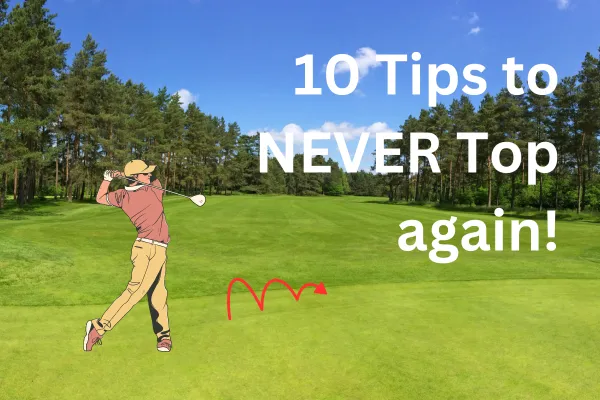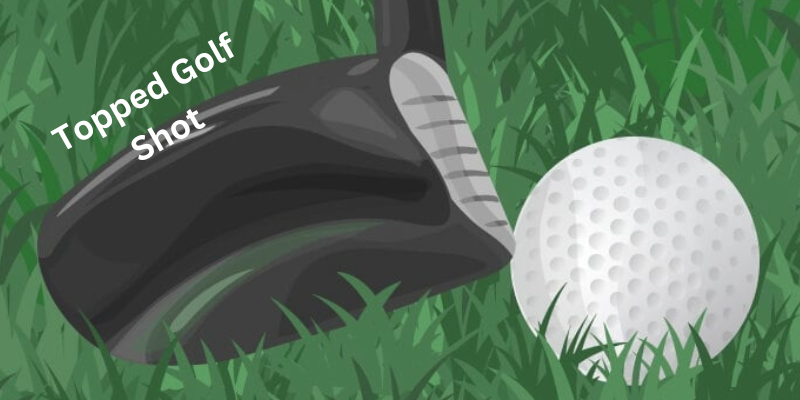
Top 10 Tips to Stop Topping the Golf Ball Now
Top 10 Tips To Stop Topping the Golf Ball || Coach Erik Reveals His Secret Methods
Hi. My name is coach Erik Schjolberg of EJS Golf Academy located in Scottsdale, AZ at McCormick Ranch G. C. Having coached for nearly 30 years, I have seen pretty much everything. I am always surprised by something but not surprised anymore with the Old Wives Tales revolving around golf. Specifically the lies and tales around topping the golf ball are ones that upset me b/c they hurt the golfers chance of getting better when ignorant people chime in with advice that is awful like keep your head down, stop peeking, etc. when someone tops the golf ball. It is completely assanine to think that someone picked their head up and didn't watch the golf ball is why they topped the golf shot. No one can see the ball when they hit it, why would they think it matters for a topped shot?
Find out now which of the Titleist golf balls are the top 5 in 2024.

Here are ten tips to help you stop topping the golf ball and improve your game significantly. First and foremost, don't be afraid to hit the ground. A common trait among those who top the ball is the fear of making contact with the turf, worrying they might chunk the shot. However, interacting with the turf is essential for compressing the ball correctly. So, if you're someone who often tops the ball, it's time to shift your mindset and aim to strike the ground, ensuring you make the proper contact needed for a good shot.
Secondly, adjust your posture by bowing forward from your hips. This adjustment allows your arms to hang naturally with your hands positioned below your shoulders, which is the correct posture for golf. This forward-leaning stance brings your eyes and chest closer to the ground, which in turn makes it easier to connect with the turf when you swing.
When it comes to your knees, there's no need for excessive bending. Keep them relaxed enough to remove any stiffness but not so much that they become the main way you lower your body. Over-bending the knees can cause your upper body to remain too upright, complicating your ability to hit the ground or make center-faced contact with the ball.
Stop Topping Video from EJS Golf YouTube Channel
The third tip involves your hands and clubhead. During your backswing, let your arms extend and reach down towards the ground. Imagine you're throwing something straight down to the ground from your hands. This feeling indicates you're doing it correctly. Extending and straightening your arms in this way helps bring the club down to the ground, which is necessary for achieving a higher ball flight.
Fourthly, keep your weight forward. I recommend maintaining a consistent weight distribution from your toes to your heels throughout the swing. Not everyone practices this, but it's particularly useful if you frequently top the ball. As you swing down, feel the weight on your toes and your forward foot. This helps prevent you from pulling back, which can lead to topped or thinned shots.
Making a divot is the fifth tip and it's an important one. Don't think of a divot as something negative. If you do, it's time to retrain your brain to understand that a divot is a sign of progress, especially if you're prone to topping the ball. Divots can vary and they can tell you a lot about your shot. Often, the first divots occur before the ball, which can result in a fat shot. While not ideal, it's still a move in the right direction as it shows you're getting the club to the ground. A useful tool for practicing turf interaction is the Divot Board, which is both enjoyable and straightforward to use.
The sixth tip is to listen for the 'thump' of the club hitting the ground during your practice swings. If you're someone who often tops the ball and you skip practice swings, you're missing out on a crucial part of your preparation. Practice swings allow you to feel and hear the club make contact with the ground, which you can then try to replicate when you take your actual shot. For example, if you're using a hybrid and you don't practice hitting the ground, you're likely to top the ball. But by taking practice swings before your shot, you can turn those thoughts into a tangible feeling, boosting your confidence to strike the ball correctly.
Seventh, let your trail heel lift naturally. If you've got the right posture and you're extending your arms towards the ground on the downswing, your trail heel should come up on its own. Think of it like throwing a ball underhand; your back heel lifts as you toss it. The same motion should occur in your golf swing. This heel movement helps ensure the bottom of your swing arc is in the correct position and assists in keeping the club low to the ball, which is necessary for engaging with the turf and hopefully making a proper divot.
Eighth, keep your hands, arms, and elbows relaxed. Any tension in your body can hinder your ability to lift the golf ball. Assuming your grip is correct and you're holding the club in your fingers, avoid squeezing too tightly. Close your hands around the club without much tension. A proper grip allows for relaxation in your hands, elbows, arms, and shoulders, which not only makes it easier for the club to reach the ground but also contributes to increased speed and distance.
Ninth, consider teeing the ball higher. If you're prone to topping your shots off the tee, try teeing the ball as high as necessary to enhance the ball flight. For all par 3's, unless you're using your driver, I recommend breaking the tee in half upon impact.
Lastly, change your intention by aiming lower. Golfers can be quite stubborn and set in their ways, so it's crucial to break those bad habits. To stop topping your shots, get comfortable with being uncomfortable and try a different approach. You might mishit at first, but seeing a different type of miss usually indicates that you've made a change in your swing, and that change could very well be a step in the right direction. Start looking in front of the golf ball.

It's important to emphasize the significance of adapting your approach when you find yourself repeatedly topping the ball. This means you should be willing to experiment with your swing and stance, even if it feels strange at first. By aiming lower than you're accustomed to, you're altering the dynamics of your swing, which can lead to better contact with the ball. Yes, you might encounter a few mishits as you adjust, but these are signs of change, and change is necessary to correct the issue of topping the ball.
Remember, the goal is not to avoid the ground but to use it to your advantage. The ground is your friend in golf, and proper interaction with it is what separates good shots from poor ones. By following these tips—ensuring you're not afraid to hit the ground, maintaining proper posture, allowing your arms to extend, keeping your weight forward, making a divot, listening for the 'thump', letting your trail heel lift, keeping your body relaxed, teeing the ball higher, and changing your intention—you're setting yourself up for success on the golf course.
Each of these tips is designed to address a specific aspect of the swing that can contribute to topping the ball. They are interconnected, with one aspect often influencing another. For instance, a relaxed grip can affect how well you can extend your arms, and a proper extension can determine how effectively your weight shifts. It's a symphony of movements that, when executed correctly, results in a beautiful shot.
So, take these tips to the driving range and work on them one by one. Be patient with yourself as you make these adjustments. It's not uncommon 1ddd feel a bit off while you're working on correcting your swing. But with practice, these new movements will become second nature, and you'll find yourself hitting the ball with more consistency and power.
In conclusion, topping the ball is a common problem, but it's one that can be fixed with the right approach and a bit of practice. Figure \`out your low point for each club and make that your number one on each golf s Use these tips as a guide, and don't be afraid to seek help from a professional if you're struggling to make the changes on your own. With time and dedication, you'll see improvement, and those frustrating tops will become a thing of the past.
